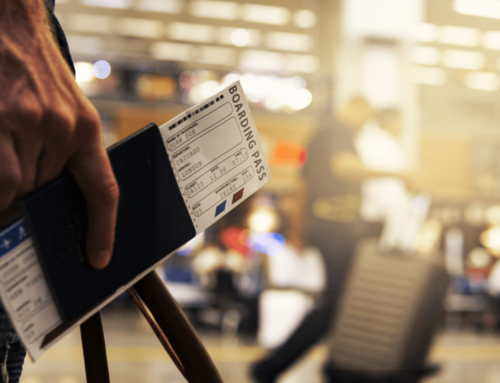With the holidays around the corner, customer service sometimes changes for the worst. How does that bode for deaf and hard of hearing customers who are trying to survive the most credit-disrupting, nerve-wracking, and elbow-jostling season of the year? This holiday, are you prepared to provide deaf-friendly customer service?
We already discussed 5 Customer Service Fails, which include the rushed quarterback pass, the pen and paper fumble, the deer and the headlights, the third-person, and the foot in the door.
Now, add the stressors of the holiday shopping season: These mistakes seem to go on steroids.
To meet Q4 revenue goals, businesses need every edge in efficiency and profits. With Black Friday customers camping out for first dibs on a mega-deal, common decencies and patience often go out the window.
But, fret not! We present you the solutions to the five fails that ail this season:
Fail #1: Not captioning your business videos
News flash: It’s the 21st Century! There’s captioning 10,000 feet in the air , there’s FCC-mandated captioning deadlines, and there’s star fangled SONY captioning glasses at movie theaters.
So why not just take the inevitable next step, and just caption your online business videos already?
It’s not as expensive as it sounds, either. Many businesses already use YouTube to build SEO presence, get free hosting, and take advantage of an API that can integrate YouTube dynamically into their sites.
Customer Service Tip: To provide deaf-friendly customer service, instead of the shoddy beta-captioning that several platforms are working to perfect, add caption files or transcripts.
Fail #2: Un-democratic waiting line ethics
‘Tis the season of efficiency, and unfortunately, that means some businesses develop a habit of allowing customers to cut in front of the line when a deaf or hard of hearing person is “taking too long.”
Other than the usual double-dosage of human patience, technology can help:
“Every morning at Starbucks, I get through long lines quickly using Notes App. Instead of struggling to communicate for 2 minutes, I show the barista my order on my iPhone and we’re finished,” said a deafblind Apple store employee.
Customer Service Tip: To provide deaf-friendly customer service, no matter how busy your establishment is, keep the line democratic. If it helps, try the pen and paper method to speed things up.
Fail #3: Passing the buck…to the hearing person
What’s ruder than FAIL #2, ignoring deaf customers and allowing hearing customers to go first? Assuming that this said deaf customers hearing friend is picking up the check.
This happens more often than not, and it may partially be ascribed to the Deaf Community’s reputation as bad tippers. Until servers erase that bias, they may unconsciously foist the check onto someone – a hearing person – whom they believe more economically capable to handle the bill and may tip better.
There are exceptions: Perhaps the deaf person is a teen eating with his hearing parents. Or maybe it’s a first date between the deaf gal and her hearing suitor. But even then, it’s still a reach to assume anything but these two going Dutch.
Customer Service Tip: To provide deaf-friendly customer service, no matter what your personal experience is with deaf tipping, or what the social dynamics appear to you, place the bill in the middle of the table or ask “would you like separate checks?”
Fail #4: Unaccessible Holiday Santa’s
For many families, mall Santa’s are a rite of passage. Whether Johnny cries in horror or gleefully rattles off his wish list, it’s captured on the camera for eternity. Since it only happens a few weeks a year, why not invest in accessible Santa’s?
As we learned while writing about A Signing Santa and the Miracle on 6th and Pine, all kinds of folks – not just deaf and hard of hearing ones – are smitten by a deaf-friendly Santa’s.
Customer Service Tip: To provide deaf-friendly customer service, consider incorporating diversity and accessibility into your Santa program. Whether you’re hiring a freelance Santa who does gigs for company holiday parties or a real estate open house, add “sign language” to the job description – or hire an interpreter-elf separately.
Fail #5: Ignoring the rest of the supply chain
A vast majority of today’s customers avoid gridlocked parking lots and resort to online shopping.
But that doesn’t mean the “point of sale” challenge is eliminated for deaf and hard of hearing customers. For example, those of us who live in walk-up apartments often struggle with package deliveries that don’t respectfully acknowledge our shipping notes.
Many missed deliveries have resulted in delivery drivers who continued to hit our buzzer or dial our phone number. Instead, they could simply send us a text message or e-mail as requested.
Secondly, don’t ignore the registration part of your accessibility strategy. E-commerce is a sticky area for accessibility: Several years ago, a deaf woman sued eBay, claiming that eBay’s identification system breaches federal and state laws. eBay’s verification process required new sellers to listen to a PIN given on the telephone, and then enter that into the site. This process would prove that the phone number they’ve provided is correct. Without assistance from other’s, deaf sellers cannot complete the verification.
Legal or not, the point is simple: Don’t be a jerk to the differently-abled users on your site.
Customer Service Tip: Whether you run an e-commerce site or are part of the delivery equation, be sure to include accessibility training for the tech professionals building your registration pages, and for the folks in charge of delivery.
Got questions on how you can provide more inclusive and deaf-friendly customer service this holiday and beyond? Send us an email or DM on LinkedIn!





